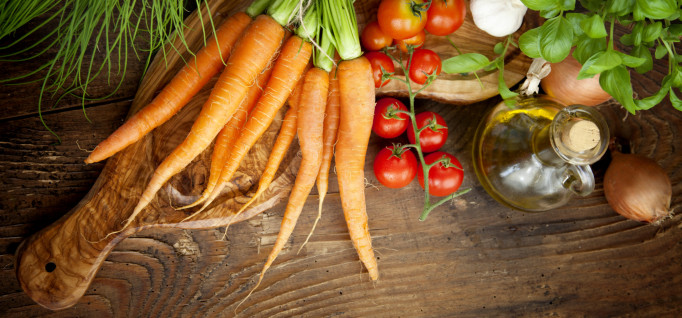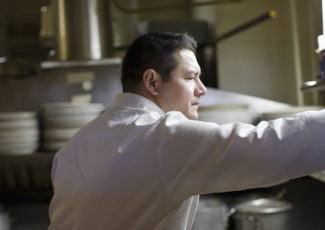Food Studies Program to Feed Students and the Community
By Sonya Stinson
February 17, 2015
After a successful pilot, a community college builds out course curriculum with local partners.
You don’t have to look far to find community-building and workforce development in the Bronx, New York. The home to Hostos Community College and the largest fresh-food distribution center in North America, Hunts Point food markets, the borough is where collaboration on a program designed to prepare students for jobs in the local food industry is gaining attention.
“Most of the fresh food that you would access in many of the restaurants in Manhattan and many of the more gentrified areas of the other boroughs ultimately has a connection to that access point,” says Felix Cardona, assistant dean of academic affairs at Hostos.
But, ironically, many of the people living in the low-income community surrounding this hub lack access to affordable healthy food — and the consequences show up in local stats on diseases like diabetes and high blood pressure.
Hostos has a long history of engagement in social-justice issues, according to Cardona, so the fact that many area residents suffer from poor nutrition, even with a bounty of fresh produce nearby, pointed to a serious problem that college administrators thought they needed to address.
From pilot to program
In fall 2013, early in the program’s development, Hostos piloted an English course in which students examined the work of food critics and wrote culinary-themed essays. One year later, the school added Introduction to Food Studies to its course catalog.
This coming fall, the college will officially add the food studies program, in the Department of Natural Sciences, to its degree offerings. Its academic tracks include food policy; social issues in food; health and nutrition; and environment and sustainability. Students who took courses before the program launched will be able to apply those credits toward an associate degree in food studies.
Developing the partnership
The program’s developers met with experts in the local health-care and food-production industries to brainstorm how to design the curriculum and build an ongoing partnership.
“That’s still a developing conversation, but [the industry experts] are very interested and want to partner,” Cardona says, adding that community leaders recognize the value of collaborating with the college to help make access to nutrition and health care more equitable.
The process of creating an interdisciplinary curriculum such as Hostos’ food-studies program presents some unique challenges, Cardona says. “You’ve got to be able to identify where the points of intersection are, bring in the right perspectives and make sure you have the faculty engaged. You also have to make sure you’re identifying the trends that can inform the program going forward.”
A look at the future
Over the next five years, administrators hope to see a cohort complete the entire sequence of the program. They want to use their community partnerships to establish service learning and internship opportunities for students. Eventually, they’d like to make some of the courses available to local high schools.
“We also want to make sure that we continue to build on the curriculum so that students can transfer to baccalaureate programs and pursue further studies,” Cardona says. “The other part of this is to help establish the discipline as a regular part of the academic experience so that students who may not want to major [in food studies] have the option of learning about this emerging field.”
How does your college connect students with community partners? Tell us in the Comments.










